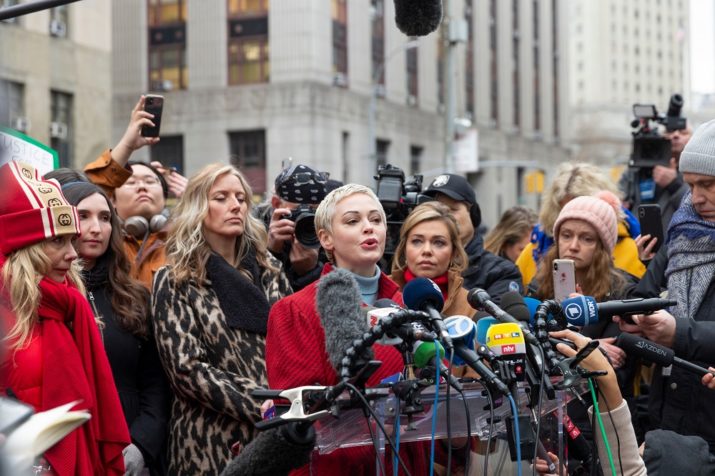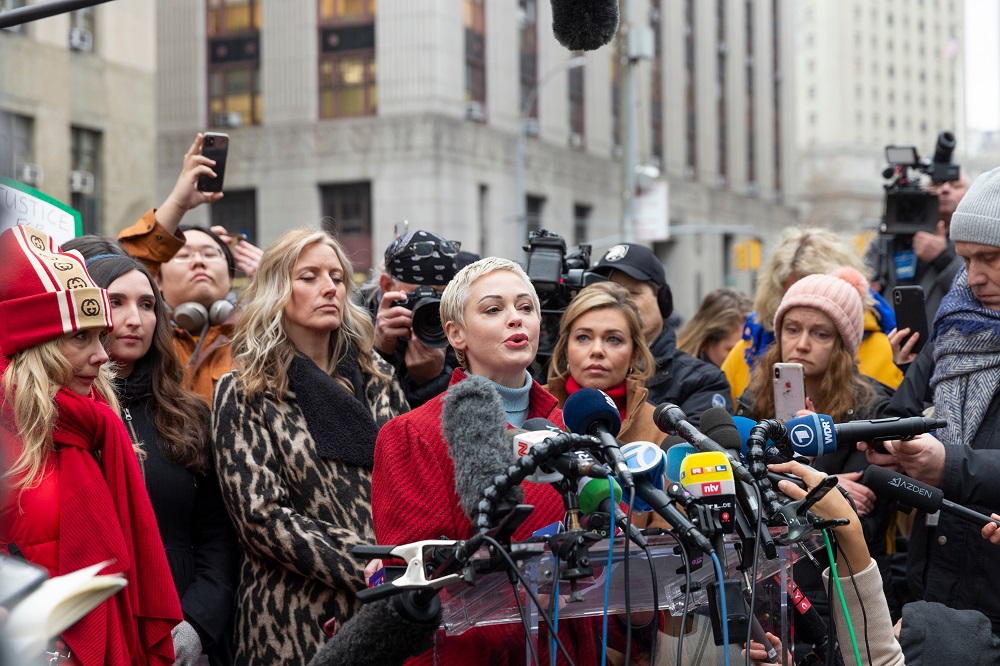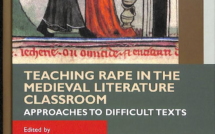
Not Just Pretty Faces, They Have Powerful Voices Too: Celebrity Discourse and the #MeToo Movement

This is part of our special feature, Me Who? The Audibility of a Social Movement.
The phrase #MeToo gained global attention when American actress, Alyssa Milano used it as a Twitter hashtag in response to allegations of sexual harassment by movie director Harvey Weinstein in 2017. Milano encouraged Twitter users to use #MeToo to demonstrate the global prevalence of sexual harassment. The hashtag was used twelve million times in the first twenty-four hours of her tweet by both celebrities and the general public (Mendes, Ringrose & Keller, 2018, Zacharek, Dockterman & Edwards, 2017).The origin of the term MeToo, can be traced back to 2006 when civil rights activist, Tarana Burke, founded the MeToo nonprofit organization that allowed victims to connect and heal from the trauma of sexual harassment (Harris, 2018). The combined forces of celebrity voices and a social media platform have rapidly mobilized the #MeToo movement towards a global stance against sexual harassment. Celebrities as discursive agents have the power to construct and reconstruct phenomenon in particular ways, as such, the aim of this paper is to interrogate how celebrity responses to the #MeToo movement have influenced constructions of sexual harassment in the media.
Beyond Twitter, celebrities brought global attention to the issue of sexual harassment at the 2018 Golden Globe Awards with an all-black dress code. The dress code symbolized solidarity and support towards the victims of sexual harassment prompted by the #MeToo movement. Celebrity public engagement through social media and television maintained public attention on the movement and the problem (Buente & Rathnayake, 2016), thereby exhibiting the discursive potential that celebrities have in society (Luthar & Trdina, 2015).
As a highly visible cohort of public figures, celebrities not only have the potential to discursively influence contemporary issues, they have the potential to be activists and resist silence for any given cause. In the instance of sexual harassment, silence is both a perpetuating and maintaining factor and the reticence of some victims of sexual harassment serves not only to reinforce systemic patriarchal oppression (Rodino-Colocino, 2018) it also reinforces patriarchal power, as gender and sexual violence is deeply embedded in patriarchal oppression. Some celebrities, however, have challenged this silence by bringing global attention to sexual harassment through the #MeToo movement, which has allowed women to either discreetly or openly come forward with their experiences. For example, actress Ashley Judd in a New York Times interview, openly accused Weinstein of multiple attempts of sexual harassment (Kantor &Twohey, 2017). Judd’s revelation also created an opening for other women under Weinstein’s employ to come forward (Zarkov& Davis, 2018). Indeed, celebrities have played a substantial role in the #MeToo movement by publicly disclosing their own personal accounts of sexual harassment on social media.
Celebrities as contemporary culture icons have been used as “brands” to bring attention to global issues such as poverty or human rights (Becker, 2013), as they have the ability to elicit extensive discussions around serious issues within the public sphere (Drake & Miah, 2010). Additionally, celebrities’ large following and fan base allow them to engage and foster forms of civic movement with a wider audience with relative ease (Bennet, 2014). Moreover, they are capable of mobilizing and creating solidarity amongst fans within certain social movements (Harlow & Brenbrook, 2017).
Social media sites, such as Twitter, provide a platform for celebrities to directly share their political and social stances, as opposed to only their photographsusually depicted inthe media. Furthermore, their social media accounts enable them to personally engage with their fans (Usher, 2015). Thus, celebrity involvement in the #MeToo movement has humanized their sometimes obscure standing on social issues.
On a broader scale, the #MeToo movement gained momentum on Twitter as it provided a public platform for individuals to reveal their #MeToo narratives. Through the exchange of experiences, sexual harassment narratives were negotiated on a public platform. As agents of social intercourse, discourses not only represent particular realities, they actively (re)construct these realities. Celebrity discourses of #MeToo movement on Twitter warranted empirical investigation, not only because of the privileged positions celebrities hold, but also because they have harnessed social media platforms to disseminate their message on a rapid global scale.
Methodology
The data set that was analyzed for this research was sourced from Avclub.com. The inclusion criteria required that only tweets in English, tweets from accounts with the blue verified badge and tweets between October 15, 2017 and March 5, 2018 be included. October 15, 2017 marked the date the #MeToo began trending on Twitter, while March 5, 2018 marked a significant moment for the movement when celebrities such as Annabella Sciorra, Ashley Judd, and Salma Hayek—three of Weinstein’s accusers—appealed for the movement to illicit change beyond Hollywood. Celebrity responses that were not found on Twitter, tweets that were not the initial response to the movement, non-verified Twitter accounts, and tweets that did not have the #MeToo were excluded.
The Avclub.com site was consulted to identify the celebrities who have responded to the #MeToo. Of the fifty-three celebrities identified, thirty-five met the inclusion criteria. Barring two extracts, majority of the tweets were from female celebrities. Ethical concerns for the study were circumvented because Twitter users accept the policy that their information posted on the site may be used for research purposes (Webb et al, 2017).
To understand celebrity responses to the #MeToo on Twitter, Parker’s (2004) approach to discourse analysis was used. Parker’s method was chosen as it allowed us to analyze how the celebrity discourses reproduced or challenged dominant beliefs and how different types of discourse maintain or disrupt the matrix of power within which sexual harassment is embedded.
Findings and Discussion
The analysis revealed three dominant discourses that constituted celebrity responses to the #MeToo movement. These were: discourses of the empowered victim, discourses of perpetrator power, and, finally, male exclusion from the #MeToo movement also featured prominently.
The Empowered Victim
Discourses of victimhood dominated the celebrity tweets. However, the victim discourse was not in the conventional sense of the victim’s subjective experience of the sexual harassment, instead the discourses referred to how victims of sexual harassment resist self-blame, how victims displayed courage and how victims garnered support from others. The extracts below demonstrate these findings:
@quinncy tweeted “It’s not your clothing. It’s not your feminism. It’s not your education. It’s your assailant. #MeToo.” (October 15, 2017), (Resist self-blame).
@PattyArquette “So grateful to the brave victims like my sister @RoArquette for sparking a worldwide conversation across all industries and nations. #MeToo” (November 2, 2017), (Victims displayed courage).
@JaimieAlexander “I’ve been there. I believe you. I’m here for you. I understand. Enough is enough. #MeToo” (October 16, 2017), (Victims garnered support from others).
@JensenAckles “For my wife, for my daughters, for all women…I stand with all of you. This has gotta change. #MeToo #nomore” (October 16, 2017). (Victims garnered support from others).
Historically, patriarchal ideology position women as the sole gatekeepers of their body, and transgressions on the female body are attributed to faulty female behavior (Rodino-Colocino, 2018). Therefore, women who report sexual harassment are degraded and are perceived as responsible for their perpetrator’s actions (Carr, 2013). The celebrity responses that were analyzed have challenged this.The celebrity responses to women who came forward with allegations of sexual harassment were applauded, thereby empowering women instead of maintaining their powerless victim status (very often seen in the legal justice system). Additionally, celebrity discourses providing support to female victims havethreatened forms of patriarchy that have historically silenced women. It was notable that one of the celebrity respondents was Jensen Ackles, a male celebrity who has supported the #MeToo movement. Discourse of support of the movement from a man threatens hegemonic patriarchal power that has historically subjugated women.
The analysis revealed that notions of victimhood have taken on alternate forms, compared to the dominate representation of powerless victims at the mercy of their perpetrators, the legal justice system, and society at large. The majority of the tweets provided validation and support for female victims of sexual harassment. Celebrity tweets have disrupted hegemonic victim discourses by applauding victim’s bravery, by outwardly showing support to victims and by dispelling notions of victim self-blame.
These discursive constructions challenge ideas of victimhood that is nestled between a well-established, what Furedi calls, a culture of victimhood that women are drawn into and a cult of human vulnerability (Baker, 2010). Ferudi (2003) has argued that these positions dissolved people of personal agency and responsibility. The (re)construction of victimhood by the laudatory tweets draw instead on evolved neoliberal and post-feminist discourses that emphasize female empowerment and assertiveness.
The Powerful Perpetrator
Following discourses ofvictimempowerment, was the power of the perpetrator discourse. This discourse emphasized the positions of power that perpetrators occupy and the concomitant abuse of that power. Further, these discourses,call perpetrators of harassment into account. Social media coverage of the #MeToo reports primarily focused on high profile male actors, directors and or producers who perpetrated sexual harassment (Hearn, 2018). The celebrityresponses themselves drew attention to the high offices that known offenders occupy and how these positions are exploited.
@tarasong “Proud of sisters coming forward 4 #MeToo but disheartened 2 think so many don’t care & elected an admitted sexual assaulter 2 highest office.” (October 16, 2017).
@Alyssa_Milano “At the very same time that we are asking Franken to resign from senate — we are allowing an accused child molester to run for senate. At the very same time that “Silence Breakers” is the #TimePersonOfTheYear — a self-professed pussy grabber was runner-up. #MeToo.” (December 6, 2017).
Various American voters from diverse backgrounds and institutions voted these perpetrators into positions of power. However, the celebrity tweets have begun to upset the well-established patterns of hegemonic patriarchal power held by these perpetrators.
The analysis has shown that celebrities have thrown down the gauntlet and ousted men in positions of power by publicly calling their positions of power into question. There has been a well-established corpus of literature on how power dynamics play out in incidences of sexual harassment (Halper & Rios, 2019). These discourses represent a shift of focus from the victims of sexual harassment to the perpetrators themselves, particularly men who are in positions of stature. The celebrity discourse has catalyzed a course of activism that has challenged hegemonic notions of omnipotent male perpetrators in positions of power by calling them to account for their abuse of power.
Male Exclusion
One of the most salient findings of the analysis was the celebrity observation of the exclusion of males as perpetratorsof sexual harassment. The notable exclusion of not only male voices in the responses to the #MeToo movement,but also their exclusion from the problem of sexual harassment was noted in the tweets. Of the thirty-five tweets analyzed, only two were from male celebrities.
@rosemcgowan ““we talked about how many women were raped last year, not about how many men raped women. We talked about how many girls in a school district were harassed last year, not about how many boys harassed girls. We talked about how many teenage girls in the state of Vermont got pregnant last year, rather than how many men and boys impregnated teenage girls.”
“So you can see how the use of the passive voice has a political effect. [it] shifts the focus off of men and boys onto girls and women. Even the term’ violence against women’ is problematic. It’s a passive construction; there is no active agent in the sentence. It’s a bad thing that happens to women, but when you look at that term’ violence against women.’ Nobody is doing it to them. it just happens to them…Men aren’t even a part of it!” Jackson Katz” (October 15, 2017).
@Pappiness “Men, Don’t say you have a mother, a sister, a daughter… Say you have a father, a brother, a son who can do better. We all can. #MeToo” (October 15, 2017).
@terrycrews “Friendship is born at the moment when one person says to another:’ What? You too? I thought I was the only one.'” – C.S. Lewis #METOO” (January15, 2018).
Tarry Crews and Jensen Ackles, mentioned earlier, were the few notable male celebrities who supported the movement. It was noted that during the Golden Globes, where women stood against sexual harassment, only a few male celebrities participated in the dress code (Gongzalez, 2018). Lee (2018) suggests that men are inclined to distance themselves from the movement as their support threatens patriarchal power, and encouraging women to stand up to men may dissolve the power men possess over women. Pleasants (2011) posits that men distance themselves from feminist movements when they are perceived as perpetrators instead of allies. Even though men were not overtly categorized as perpetrators in the celebrity tweets, few male celebrities participated in the movement. It has been suggested that male celebrities may have resisted participating due to fear of being perceived as homosexual by other men (Kroeper, Sanchez & Himmelstein, 2013) or fear of losing their position of power over women (Drury & Kaiser, 2014).
Celebrity responses drew attention to how male power is retained and maintained, as male perpetrators are not identified and included in discursive constructions of blame and responsibility for sexual offenses. Historically, female victims are portrayed as responsible for their own victimization as their perpetrators are not included in the narrative. This finding concurs with North (2015) and Easteal and Holland’s (2016) findings, which indicate that sexual violence is reported as individual aberration rather than a systematic problem, which further reproduces unequal power relations between men and women.
The discourse of these celebrity tweets threatens patriarchal power as it calls for the inclusion of men in reporting sexual violence, which place male perpetrators in a position that vilifies them, subsequently disrupting dominant discourses that attribute blame and responsibility of sexual violence on female victims.
The discourses used by the celebrities have called men to account and have shifted blame from victims of sexual harassment. These discourses place male culprits in position of perpetrator, which upsets patriarchal ideals that have normalized sexual aggression of men and the women as the natural object of their sexual exploitation (Hlvaka, 2014).
This discourse revealed the relative silence of men on issues of gender-based violence and sexual harassment. Historically, gender-based violence is seen as a women’s issue fought by women with little focus on the men who actually perpetrate these crimes. Additionally, it has been argued that the privileged social status of men is denounced when they confront sexism as they would need to recognize their own social status is due nothing more than male privilege (Drury & Kaiser, 2014). Thus,for men, confronting sexism could be perceived as threatening to their masculine identity especially if they strongly identify with it (Burn, Aboud & Moyles, 2000).
The movement, as a social phenomenon marks a modern-day revolution for activism that can be traced back to Women’s March on Versailles in 1789, and the Take Back the Night marches of the 1970’s (Kingston, 2018). What differentiates the contemporary #MeToo movement is its use of two powerful forces: social media and celebrity voices. Celebrity endorsement has not only fueled the #MeToo movement towards a fully-fledged course of activism, the celebrity tweets on the hashtag has contributed to disrupting dominant discourses of victimhood, perpetrator power and male exclusion on issues of sexual harassment.
The #MeToo movement has heralded new possibilities in the fight against gender based sexual violence, and celebrity voice juxtaposed with social media has catapulted this fight into the global arena. However, while the global activism that celebrities have embodied have had discursive influence, the fight and the voices, are still only of a privileged few, which still leaves masses of women around the world without voice or representation in the face of sexual harassment.
Sumayya Ebrahim is both an academic and is a psychologist in practice. She is based at the University of Johannesburg, and is extensively involved in the training of professional psychologists. Her research interests are predominately based on the representations of sex, gender and the body in social media.
Lisa Liu is a former master’s psychology student whom aspires to be part of creating a gender inclusive world. She believes the famous words of Martin Luther King, ‘’ Darkness cannot drive out darkness, only light can do that, hate cannot drive out hate, only love can do that.’’
References
Baker, J. (2010). Claiming volition and evading victimhood: Post-feminist obligations for young women. Feminism & Psychology, 20 (2), 186-204.
Becker, A. B. (2013). Star power? Advocacy, receptivity, and viewpoints on celebrity involvement in issue politics. Atlantic Journal of Communication, 21(1), 1-16.
Bennett, L. (2014). ‘If we stick together we can do anything’: Lady Gaga fandom, philanthropy and activism through social media. Celebrity Studies, 5(1-2), 138-152.
Buente, B.W., &Rathnayake, C.R. (2016). #WeAreMaunaKea: Celebrity involvement in a protest movement. iConference 2016 Proceedings. doi:10.9776/16311
Burn, S. M., Aboud, R., & Moyles, C. (2000). The relationship between gender social identity and support for feminism. Sex Roles, 42(11-12), 1081-1089.
Carr, J. L. (2013). The SlutWalk movement: A study in transnational feminist activism. Journal of Feminist Scholarship, 4(4), 3, 24-38.
Drake, P., & Miah, A. (2010). The cultural politics of celebrity. Cultural Politics, 6(1), 49-64.
Drury, B. J., & Kaiser, C. R. (2014) Allies against sexism: the role of men in confronting sexism. Journal of Social Issues, 7(4), 637-652. doi: 10.1111/josi.12083
Easteal, P. L., & Holland, K. (2016). Guidelines for reporting violence against women in the news media. Australian Journalism Review, 38 (1), 5-17
Furedi, F. (2003). Therapy Culture: Cultivating Uncertainty in an Uncertain Age. London: Routledge
Gonzales, E. (2018). Women open up about wearing black on the golden globes red carpet. Retrieved from: https://www.harpersbazaar.com/celebrity/red-carpet-dresses/a14773793/celebrities-wearing-black-golden-globes-quotes-2018/
Halper, L.R. & Rios, K. (2019). Sex Roles, 80 (5-6), (247–261), https://doi.org/10.1007/s11199-018-0938-0
Harlow, S., & Benbrook, A. (2017). How #Blacklivesmatter: Exploring the role of hip-hop celebrities in constructing racial identity on black Twitter. Information, Communication & Society, 1-17. doi: 10.1080/1369118X.2017.1386705
Harris, A. (2018). She founded #MeToo. Now she wants to move past the trauma. Retrieved from: https://www.nytimes.com/2018/10/15/arts/tarana-burke-#MeToo-anniversary.html
https://doi.org/10.1080/15456870.2013.743310
Hearn, J. (2018). You, them, us, we, too?…online–offline, individual–collective, forgotten–remembered, harassment–violence. European Journal of Women’s Studies, 25(2), 228-235.
Hlavka, H. R. (2014). Normalizing sexual violence: Young women account for harassment and abuse. Gender & Society,28(3), 337-358.
Kantor, J & Twohey, M. (2017, October 5) The New York Times. Retrieved from https://www.nytimes.com/2017/10/05/us/harvey-weinstein-harassment-allegations.html
Kingston, A. (2018). Inside the first year of #MeToo. Maclean’s, 131(10), 32–36. Retrieved from http://0-search.ebscohost.com.ujlink.uj.ac.za/login.aspx?direct=true&db=asn&AN=132305771&site=ehost-live&scope=site
Kroeper, K. M., Sanchez, D. T., &Himmelstein, M. S. (2014). Heterosexual men’s confrontation of sexual prejudice: The role of precarious manhood. Sex Roles 70(1-2), 1-13.
Lee, B. H. (2018). # Me Too Movement; It Is Time That We All Act and Participate in Transformation. Psychiatry Investigation 15(5), 433-433. Doi: https://doi.org/10.30773/pi.2018.04.30
Luthar, B., & Trdina, A. (2015). Nation, Gender, Class: Celebrity Culture and the Performance of Identity in the Balkans. Slavic Review 74(2), 265-287. Retrieved from https://www.jstor.org/stable/pdf/10.5612/slavicreview.74.2.265.pdf
Mendes, K., Ringrose, J., & Keller, J. (2018). #MeToo and the promise and pitfalls of challenging rape culture through digital feminist activism. European Journal of Women’s Studies25(2), 236-246.
North, L. (2016). Damaging and daunting: female journalists’ experiences of sexual harassment in the newsroom. Feminist Media Studies 16 (3), 495-510. doi: 10.1080/14680777.2015.1105275
Parker, I. (2004). Discursive practice: Analysis, context and action in critical research. International Journal of Critical Psychology (10) 150-173.
Pleasants, R. K. (2011). Men learning feminism: Protecting privileges through discourses of resistance. Men and Masculinities14(2), 230-250.
Rodino-Colocino, M. (2018). Me too, #MeToo: countering cruelty with empathy. Communication and Critical/Cultural Studies 15(1), 96-100. https://doi.org/10.1080/14791420.2018.1435083
Usher, B. (2015). Twitter and the celebrity interview. Celebrity studies, 6(3), 306-321.
Webb, H., Jirotka, M., Stahl, B. C., Housley, W., Edwards, A., Williams, M., &Burnap, P. (2017, June). The ethical challenges of publishing Twitter data for research dissemination. In Proceedings of the 2017 ACM on Web Science Conference (pp. 339-348). Retrieved from http://delivery.acm.org/10.1145/3100000/3091489/p339-webb.pdf?ip=41.247.190.10&id=3091489&acc=OA&key=4D4702B0C3E38B35%2E4D4702B0C3E38B35%2E4D4702B0C3E38B35%2E4C4BC83121BF536E&__acm__=1541153302_4b38985541b57be04dbeef776bd7a795
Zarkov, D., & Davis, K. (2018). Ambiguities and dilemmas around #MeToo # for how long and #whereto?.European Journal of Women’s Studies 25(1), 3-9. https://doi.org/10.1177/1350506817749436
Zacharek, S., Dockterman, E., & Edwards, H. S. (2017). The silence breakers. Time Magazine. December, 18.
Photo: New York, NY – January 6, 2020: Actress Rose McGowan speaks during press conference on 1st day of Harvey Weinstein trial accused of rape and sexual misconduct at State Criminal Court | Shutterstock
Published on March 10, 2020.




